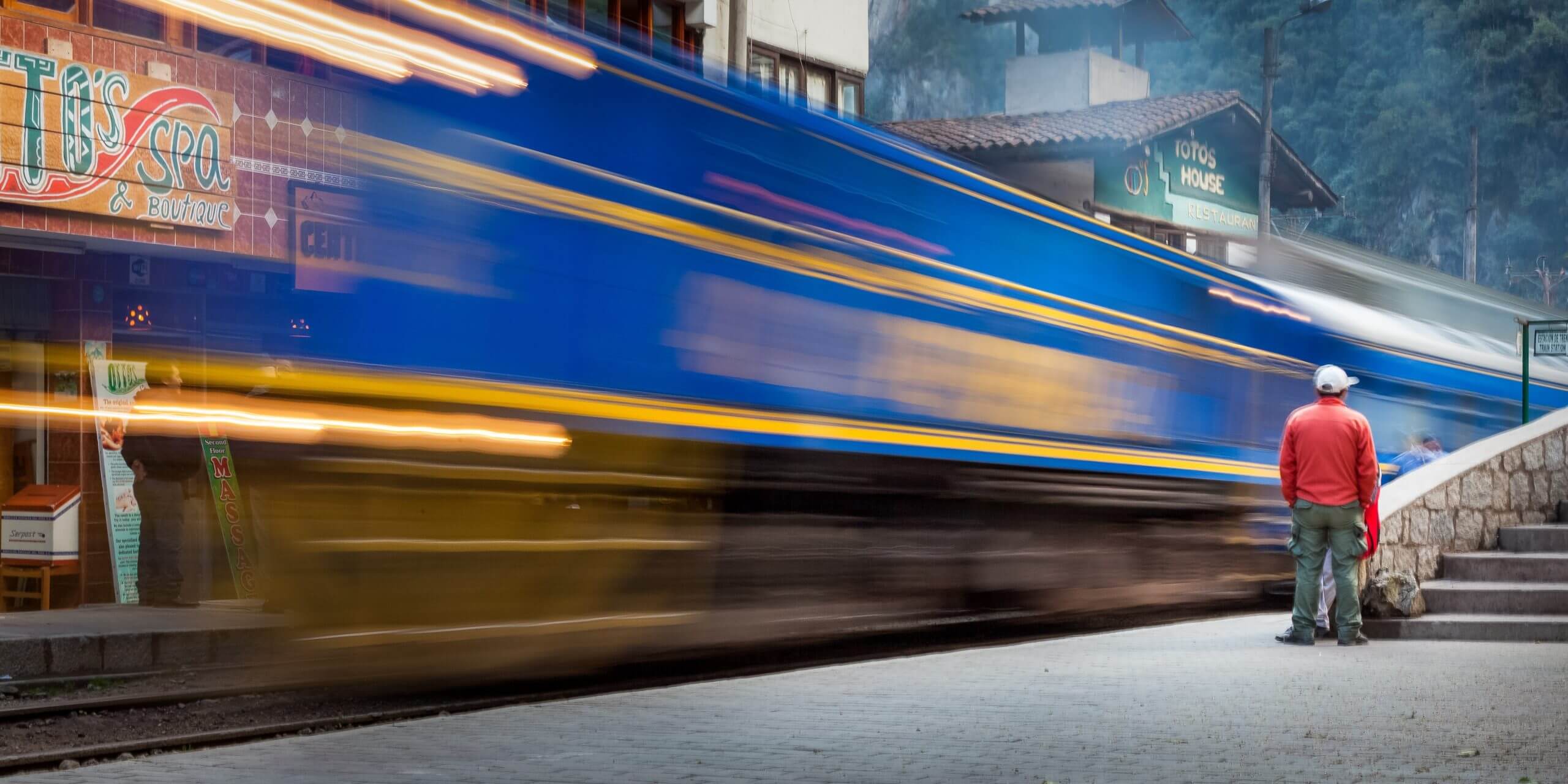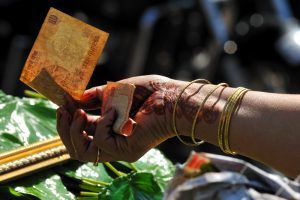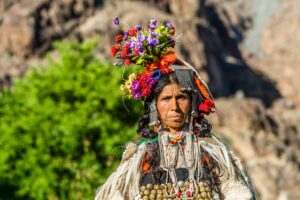Support Hidden Compass
We stand for journalism, science, history, and hope. Make a contribution to Hidden Compass and stand with us.

Over 300 years, the Incan empire grew from a tribe of herdsmen to a society that stretched from modern day Colombia into Chile. Machu Picchu remains as a striking example of that grandeur. PHOTO: SIVANI BABU.
With her husband looking on, we took turns pumping her heart for her, pushing blood to her organs, to her extremities, hoping for a gasp to bring her back, tearful and afraid, from wherever she was now.
Technically, they were called compressions. Less technically, they were called rib-breaking, breast-exposing, desperate attempts at resurrection.
I kept thinking of a painting I’d once seen of King Philip II of Spain: the small dark brown irises afloat in the white globes of big round eyes, pasty skin, and regal red hair. Lying in the aisle of the train, the woman looked like Spanish royalty.
We beat the woman’s chest on that train, as it drummed and snaked through the canyons of the Peruvian jungle. The same jungle and canyons that had once watched the Spaniards bring the Incan Empire to an end. Back then, Death had arrived on horseback. This time, Death rode with us.
~~
Earlier that day, I stood among the ruins of Machu Picchu — a citadel built on a thin saddle between two jagged peaks, surrounded by thick highland jungle and sheer cliffs.
“The truth is, no one knows what it was or what they did here,” said my guide, Carlos.
We all filed along restricted pathways, taking turns touching old altars — a procession, like an open casket funeral for a once great civilization.
He was Quechua — the name of the language and the people of this region who would have been part of the Incan Empire. But even he knew little for certain of the beliefs or history of the once thriving society, beyond the day the Spanish arrived. “Many theories, but for now, just theories.”
We walked through the ruins. I saw a team of archaeologists scrubbing at the dirt with over-sized toothbrushes. No matter where I stood, I could smell the cologne of Europeans and the fried food from the mountain top cafe. As groups of other visitors swirled around and past us, I heard German and Japanese, French and Spanish. But no Quechua.
We all filed along restricted pathways, taking turns touching old altars — a procession, like an open casket funeral for a once great civilization.
“You have to remember,” said Carlos, “This place was forgotten for 400 years. Left and covered by jungle.”
~~
Fingers tapped my shoulder and I followed them to an arm to a neck to dark hair that framed a face with big brown eyes and full lips — just as I’d envisioned all Argentinean women — a face that in any other case I’d be falling dangerously and prematurely in love with.
“¿Listo?” she said.
It was both a question and a demand: asking me if I was ready to stop performing chest compressions, telling me it was time for the next person to take my place.
It was a gruesome game of musical chairs and with each switch, hope dimmed in the aisle of that train where four of us squeezed between seats and passengers to straddle the woman’s body. She seemed too young for this. Perhaps 65. She was saturated in her own urine, ribs loose and broken, eyes wide and unsearching, unburdened, and unbelievably far, far away.
Her hair looked perfect.
~~
An hour earlier, as I’d boarded the train to Cusco from platform four, the conductor had asked me to move to another train car so that a young boy could sit near his parents. I was traveling solo and didn’t protest, particularly when I discovered that my new seat was at a table with three Argentinean women in their thirties, all of them doctors.
Just my luck, I thought and smiled and got breathlessly nervous because they were pretty and dark haired and had accents and even at 34, I hadn’t quite figured out how to speak around pretty.
Keep breathing, I remember saying to myself.
~~
“Listo,” I replied. I finished up a few chest compressions and dismounted the body, standing and backing down the aisle, careful not to step on toes or bump elbows. Our train rolled on toward the next town and we rolled on and off the body.
~~
For five days, I had pounded up and down the canyons to reach Machu Picchu.
Carlos guided our small group as we walked along the Salkantay Trail — an old Incan road. We were high in the mountains, above the tree line. A place of bare, jagged rock and clouds that swirled around peaks and into the valleys below.
“Look at these stones. This is Incan,” said Carlos. Cinderblock-sized rocks were laid into the ground, cut to fit tightly together. “Most of their roads were laid like this at one point.”
We breathed hard at the high altitude, thin crisp air stinging our noses and faces. The rectangular stones in the ground meant that 600 years ago, someone had carried them there, cut them, and placed them as pieces in the vast puzzle of a thriving civilization.
“How big was their road system?” I asked as we moved on.
“Almost 40,000 kilometers,” he said, “25,000 miles… That we’ve found,” he added.
~~
My chest had slowly tightened when I’d entered this car, squeezing at my lungs and pressing on my throat until my heart thumped with the train. I thought it had been something I ate. Then I thought it was about pretty Latin girls with accents. But it grew until it was so hard to breathe that I was just plain scared.
“¡Señora! ¡Señora!” The shouts came from behind me. Then, “¡Ayúdame!”
Before I turned, before I saw the woman collapse, before all of that, I saw the face of the doctor sitting across from me. A face can say so much.
The woman’s husband cried out — a cry that, even in memory, makes me want to cover my ears.
~~
The world came alive on our second day of the trek as Carlos led us into the buzz of highland jungle. Every few miles he’d point out another set of stones, what remained of old roads.
It had taken the Incan Empire 300 years to grow from a tribe of herdsmen to an empire that stretched from modern day Columbia into Chile along the western Andes. Three hundred years of walls and roads built stone-by-stone over the steep mountains we had climbed, cut through the unyielding green mass of jungle in which we now traveled.
We plodded along on a blanket of a million leaves and barks and rotting woods and insects which melted to an earth so rich it muddied everything it touched a blood red.
Vines hung above us and hugged to roots and strangled trees. One plant feeding on another, pushing its branches and foliage higher than that which it consumed. Layer upon layer of life held in an earthly womb.
~~
Before I turned, before I saw the woman collapse, before all of that, I saw the face of the doctor sitting across from me. A face can say so much.
Night came quickly to the train in the canyon, the jungle trees thickening the darkness around us and the peaks of the Andes towering above, hiding the sky.
“Cuarenta minutos,” said one of the doctors. Time was an irrelevant construct here. We just kept working.
The screeches of night birds and the buzz of insects were hurled through the windows into our passing train, screaming haunting questions at me. How does a train carrying tourists every day not have a proper med kit or defibrillator? Why are we still doing CPR after 40 minutes? Where the hell are we? And, where is the god damn hospital?
~~
Conquistador. Spanish for conqueror. The title was given to Francisco Pizarro before he left Spain for the New World.
I looked for sadness or anger or any emotion in Carlos as he recounted this history. But I found none — not in his tone, and not in his face.
Pizarro had arrived on Incan soil in 1526. First, he brought disease, mostly smallpox. It decimated the population, killing the Incan ruler and his only heir. Civil war broke out and the empire was already teetering when Pizarro returned 10 years later with cavalry, muskets, and canons.
Fifty years. That’s what it took for the empire to be engulfed by a new world. In 1572, the head of Tupac Amaru — the last Incan chief leading the last small resistance in the mountains — was set on a Spanish pike. Conquerors.
“The stories we know of them now are only what the conquistadors chronicled for Europe,” he said. “Everything disappeared.”
I imagine it was then that the vines began to crawl over the stones of Machu Picchu.
~~
The train rolled to a stop. A sea of curious faces floated outside. Ambulance lights dyed the world red. Two Peruvian medics brought a wooden backboard down the narrow aisle. Hands fumbled at the emergency exit window, no one quite sure how it worked.
Finally, it popped free and the car was flooded with cool night air and loud whispers. And then we stopped and looked at each other. One by one, a glance.
It’s over.
Thank you.
I’m sorry.
We counted to three. We turned her on her side and placed the backboard under her.
We counted to three. We rested her down.
We counted to three. We lifted the body.
Our tired hands and backs worked together to make something heavy feel so light as we passed it, her, the dead, out the train window.
Volume returned to our world, the window popped closed, I found my seat, and the train drummed and snaked off down the canyon. A drink service cart rolled by. Someone giggled at the end of the car. Others returned to their phones and flipped through pictures of a dead city. The world turned. Less a woman.
~~
Months later, after I’d returned home, I searched online for a painting of King Phillip II. I wanted to see her face again. The likeness was certainly there. The same eyes and red hair. Below the painting were the dates of his rule, 1556–98. He had been the King of Spain when the Incan Empire took its last breath.
~~
When I see the way the jungle melts to red earth, when I touch old stones that will never speak, how can I even wonder what is coming? Death is a heavy body passed out the window at a small town at the mouth of a canyon. The train will slow, and hardly stop, and then, will just keep going.
It’s just a matter of when and how, and maybe, what stone citadel we leave behind, waiting to be unearthed once more.

PeruRail trains move tourists from Machu Picchu to Cusco, through trees and the Andes mountains, from past to present. PHOTO: GERAINT ROWLAND.
Chase Nelson
Chase Nelson is a poet-explorer who likes howling at the moon and laughing until it hurts at big tables full of strangers in foreign lands.
Never miss a story
Subscribe for new issue alerts.
By submitting this form, you consent to receive updates from Hidden Compass regarding new issues and other ongoing promotions such as workshop opportunities. Please refer to our Privacy Policy for more information.



